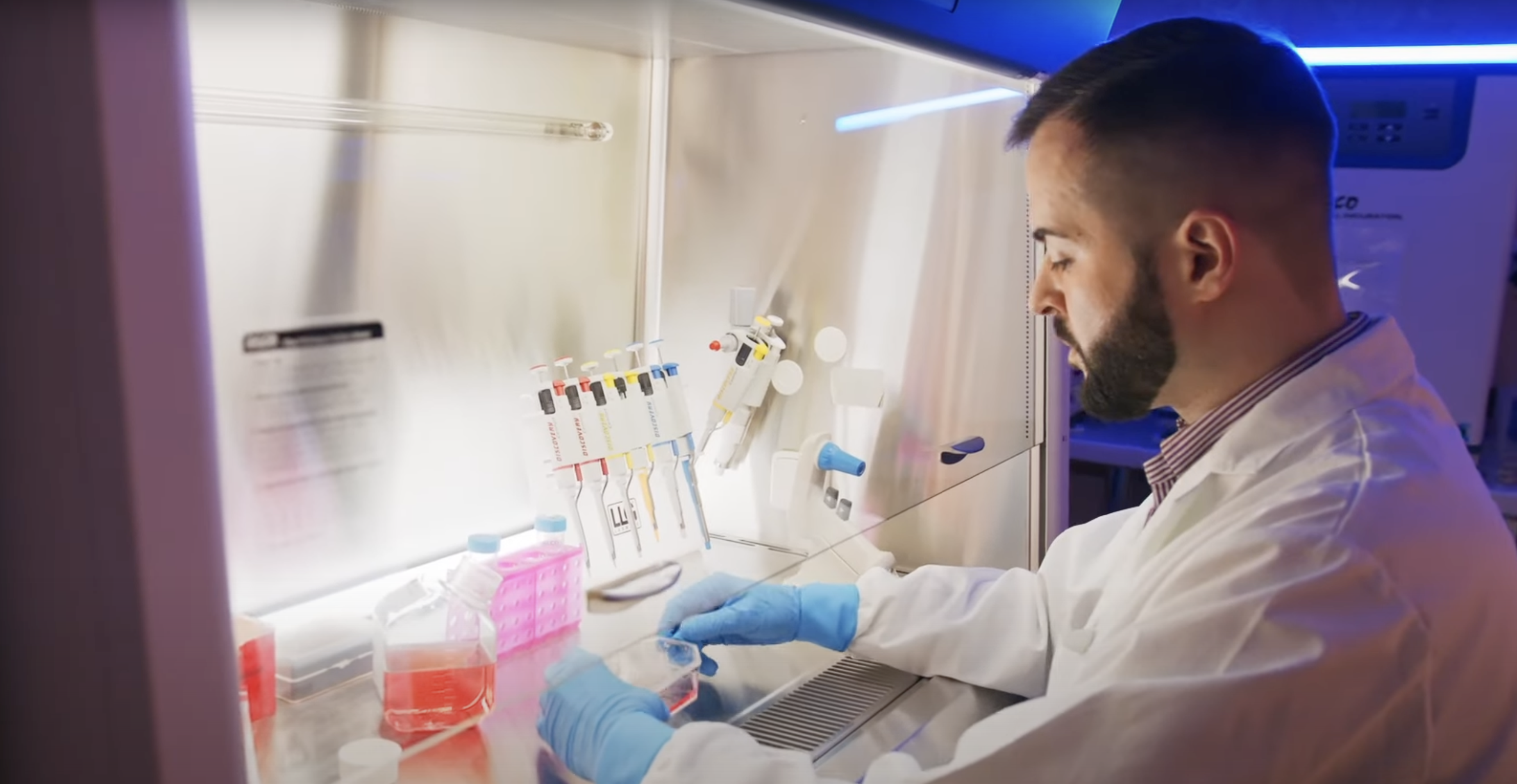Research conducted by scientists from the Medical University of Silesia and the University of Helsinki paved the way to discovering a cure for a disease that affects 2.5 million people around the world. The research was financed by the Norway Grants.
"Thanks to this project, we are able to offer patients a medicine that will be universal for a larger group. We will be able to treat retinitis pigmentosa with one drug, regardless of what mutation or gene is damaged in a given patient" - said professor Adrian Smędowski of the Medical University of Silesia in Katowice during the press conference closing the Proteoretina project, which took place on December 19, 2023.

Members of the research team. From the left: Dr. Anna Pacwa, prof. Joanna Lewin-Kowalik, prof. Adrian Smędowski (photo: Medical University of Silesia)
Insidious disease
Dystrophies (i.e. abnormal growth of tissues or organs) are hereditary diseases that lead to progressive, severe and irreversible loss of vision. One form of dystrophy is retinitis pigmentosa. The retina is the part of the eye responsible for detecting light and converting it into visual signals that are then directed to the brain.
"The disease affects the element that lines our eyeball, which includes cones and rods, i.e. elements that are light-sensitive and allow us to see in the dark and during the day. In this disease, they die. It is a disease that affects both eyes. The disease progresses at an unpredictable time. Over time, patients have a narrowed field of vision and it is as if we were seeing the world through a keyhole" - explained professor Dorota Wyględowska-Promieńska, head of the Department of Ophthalmology of the Medical University of Silesia in Katowice.
It is estimated that 2.5 million people suffer from this disease. There is currently no causal cure, but research is ongoing to find treatments using gene and cell therapies. This may prove to be very difficult because the symptoms of the disease may unfortunately depend on more than one gene, which makes gene therapy difficult.
 Dr. Xiaonan Liu, project manager (photo: Medical University of Silesia)
Dr. Xiaonan Liu, project manager (photo: Medical University of Silesia)
A breakthrough discovery
In the project, scientists studied protein interactions. They used cell culture and an animal model for this purpose. They introduced mutant proteins into cells and tracked the interactions of these proteins with other proteins. They identified 9 such interactions. Their research showed that a drug could be developed that could treat the genetic mutations responsible for the disease.
"This is a breakthrough discovery because it changes the way we think about the pathogenesis of this group of diseases" - said professor Smędowski.
 Prof. Adrian Smędowski during research (photo: Medical University of Silesia)
Prof. Adrian Smędowski during research (photo: Medical University of Silesia)
According to scientists, a new drug may be developed within 10 years.
"It depends on many factors, primarily on financing, as well as the need for multiple safety and effectiveness tests so that the drug can be administered to the patient without any risk of danger" - said profesor Smędowski.
The project "ProteRetina - searching for new therapeutic options in the treatment of hereditary retinal diseases based on the analysis of protein interactions " was implemented for two years - from October 2021 to December 2023. It received funding from the Norway Grants under the Basic Research Programme in the amount of EUR 199,978. The beneficiary of the project was the Medical University of Silesia in Katowice.
The team wants to continue their research.
Visit project website.

